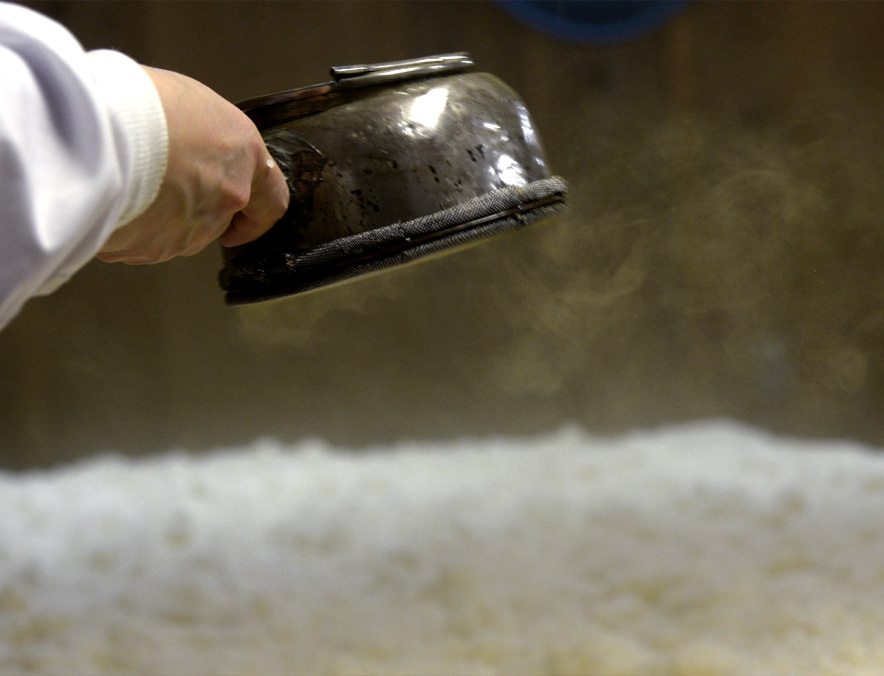1. The ideals of sake making
universal values for
a brewed alcoholic drink
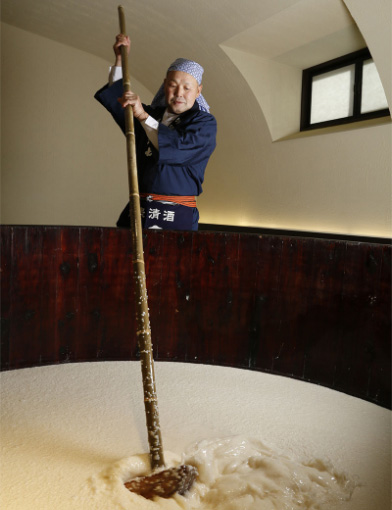
When talking about sake, it means nothing to say: “Yamada Nishiki rice, the perfect ingredient for sake brewing, was polished to xx% to create this sake.” Unlike wine, where the elements of the grapes almost completely define the flavor, Japanese sake does not depend solely on raw ingredients for flavor. A large degree of freedom has always remained with the makers, and they determine the flavor. In other words, the most important question is “What style shall we give to this sake?” Japanese sake is a distillation of its brewers’ ideals.
Daishichi prizes sake that embodies certain universal values for a brewed alcoholic drink:
- A balance of power and refinement in its depth of flavor
- A drink that matures over time
- A drink that distills human expertise and knowledge
These values are shared by the most prized brewed alcoholic drinks around the globe. At Daishichi, our aim is to win recognition for kimoto sake as the best Japanese sake of all. And our mission is to share that pleasure with the world.
2. From the forest
of micro-organisms
traditional Kimoto brewing
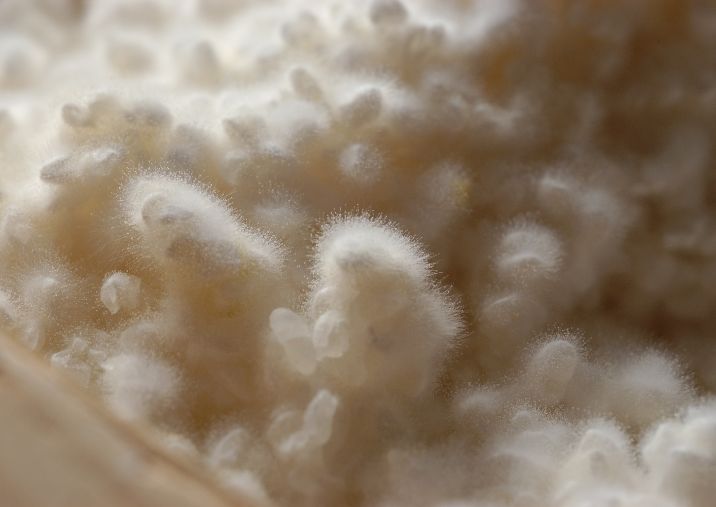
“Sake used to be made in forests of micro-organisms. But then people began removing the inconvenient trees that seemed unnecessary.”
“Technology that scientifically pursues the rational does not always make a lasting impact.”
“The more simple and pure something is, the easier it is to control. But surely people love complexity, harmony and individuality.” These are the words of highly esteemed sake connoisseurs Asai Usuke and Yoshida Shuji (in Dialogues: Ways to View Sake).
Rationalizing and economizing alter the environment in which the brewing process takes place, inevitably resulting in changes to the ecosystem of micro-organisms. Simply removing what is known as the yamaoroshi step makes it impossible for the complex of microbes to remain the same from the beginning. The soul of the kimoto method is its focus on “the best.” The flavor must be rich but mellow. It must be perfectly blended, with no acidity or coarseness to bother the taster. That is the sake to which we aspire at Daishichi and therefore we carefully preserve the ecosystem of micro-organisms without skipping any step in the total process.
Nurturing a glorious “forest of micro-organisms” takes time and commitment. The process can sometimes bear unexpected, wonderful fruit. For example, the world’s first lactic acid bacteria to possess an acidic arginase enzyme was discovered in our brewery (please see “More merits of the kimoto method” about the surprising function of this enzyme in breaking down unpleasant bitterness and preventing the production of harmful substances). Such micro-organisms cannot be produced artificially. They are truly gifts from Nature, rewarding many years of human effort. Reviving the use of wooden vats for brewing and using fully organic sake rice are both extensions of this way of thinking. We wish to create truly rich sake from “forests of micro-organisms.”
3. The latent potential
of the raw material
super-flat rice polishing

Daishichi has two policies about rice, sake’s basic ingredient.
The first is to select high-quality, perfectly ripe and even grains with as few defects as possible. The second is to limit the number of rice varieties to the absolute minimum. We insist on the highest grade available, and the grains undergo a second sorting at Daishichi.
In order to maintain a steady supply of top-quality steamed rice, we are very wary about increasing the number of rice varieties used.
Daishichi only uses either Yamada Nishiki sake rice, or Gohyakumangoku sake rice. When steaming rice one should not steam several sorts together but use only one variety, so that each can be properly handled. On that basis one obtains rice that is responsive to the creativity of the brewers.
In order to draw out the full potential of this basic ingredient, Daishichi developed the super-flat rice polishing technique. The superflat rice polishing technique doesn’t rely on dumb mechanical power, but is the ultimate achievement in the craft of rice polishing. As well as earning our polishing engineers numerous prestigious awards including that of “Contemporary Master Craftsman,” this technology has helped refine the kimoto method to an unprecedented degree, making it possible to bring out the full potential of the raw rice. Our favorite motto is “made from nothing but rice,” so the added alcohol used in our non-junmai sakes is rice alcohol.
4. The aesthetics of flavor
from Japan to the World
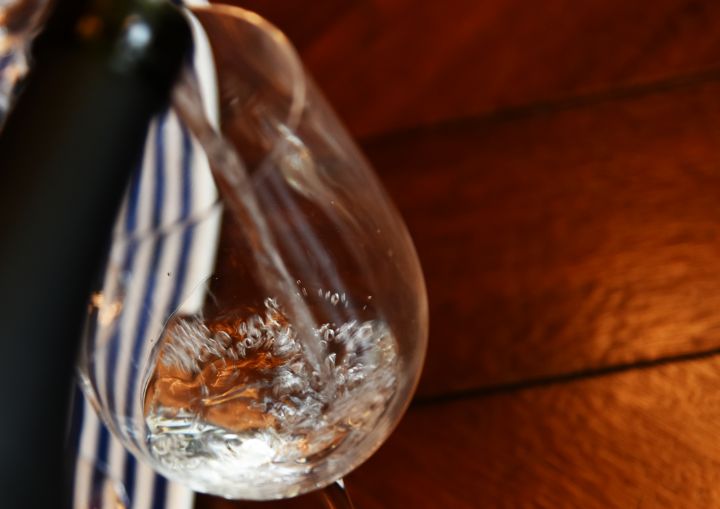
Kimoto sake has depth and richness of flavor that resonates with a variety of delicious cuisines. Its sheer quality gives it the power to stand up to oily dishes that generally overpower ordinary Japanese sake, and it has a special quality that allows it to mature and grow over time. A sake intended to be drunk warm, it provides boundless pleasure when heated. It is simply the best quality sake in the world. The range of dishes that kimoto sake can complement deserves special mention. Our sake has received accolades from chefs at French restaurants with the coveted three Michelin stars and is highly praised by influential connoisseurs around the world.
To be celebrated by the world, a sake must come to life at a meal. It must balance power, rich flavor and refinement, containing complexity within its harmony. That is the distinctive character of the best kimoto sake. And we believe Japan’s best kimoto sake makers share certain universal values with the world’s best winemakers. The individuality that can only be found in a Daishichi, the true quality that can only be achieved through the kimoto method.... The secret lies in a tactile, almost sensual subtlety and richness. The superficial fragrance and flavor can be copied, but the texture of Daishichi simply can’t be reproduced by any sake manufactured using simpler methods.
5. Aspiring to high-class
junmai sake
not junmai in the style of ginjo
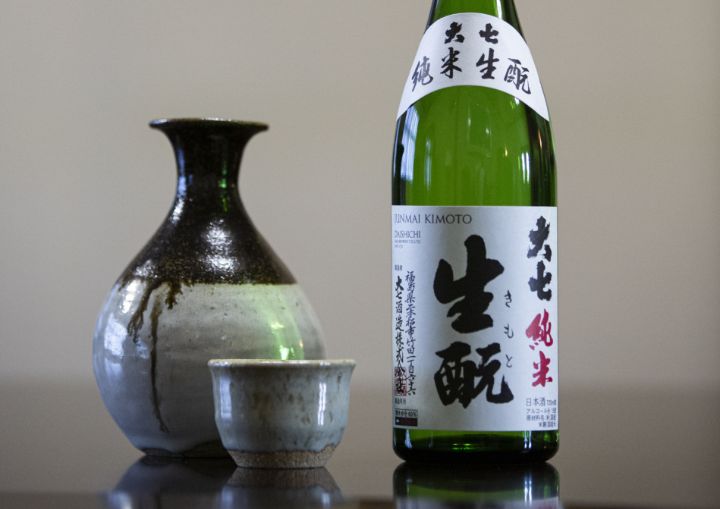
Haven’t we become used to the lopsided idea that good junmai sake is “junmai ginjo” sake? But it surely is a misjudgment of the rich essential character of junmai sake to think that the ginjo style is best, and that junmai sake is situated at the bottom of a pyramid with junmai daiginjo at the top. We at Daishichi have a completely different conviction. Why? Because if you want to make a truly delicious junmai sake, the production costs and technique necessary are far higher than those employed for an average daiginjo, made in a fixed manner. We also are sure that no junmai daiginjo can replace the deliciousness of a well made junmai sake. Rice polishing is only one element of the cost of sake brewing. The total cost is much more influenced by such matters as whether you use the kimoto method or the simplified method, and how many years you age the sake.
Plainly said, the characteristic deliciousness of junmai sake is “umami.” More than anything else, umami is sake’s contribution to world food culture. The supreme bliss of junmai sake lies in its greater power, greater depth and greater elegance. The new development of junmai sake proposed by Daishichi is not a junmai that is an imitation ginjo. It is a genuine junmai sake that has earnestly realized the junmai-type umami that has been forgotten by the present sake market.
6. The perpetual womb
clear ideas and attention to detail
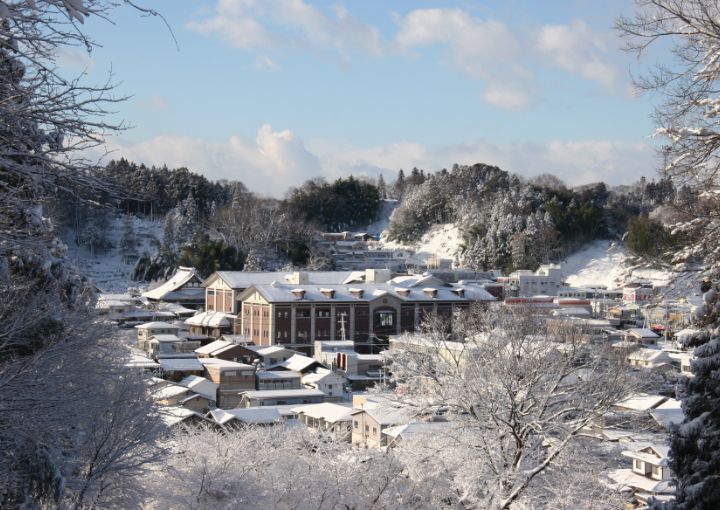
To celebrate its 250th anniversary, Daishichi has built its new brewery. A sake brewery must be an ecosystem in its own right, one in which a microbial culture consisting of a huge variety of micro-organisms is protected and cultivated. It must become a perpetual womb, consistently nurturing sake of a distinctive character. For that reason, three basic rules were laid down before construction began. First, the underground aquifer must be protected. Second, the central brewing facility must be left as it is in order to protect the microbial ecosystem. Third, the new brewery must be as robust as possible in order to last for many generations. This brewery is the culmination of Daishichi’s ideals.
Fermented alcohol should never be left abandoned and untended, nor should the caress of time be hindered by excessive refrigeration. We do not believe that the true aesthetic of brewing is to be found by rejecting maturity and constantly pursuing the freshness of young sake. Instead, Daishichi strives for sake that stands the test of time, sake so balanced and robust that rather than degrading over time, it ripens and blossoms.
Daishichi’s ideals extend to our bottling line. The aim here was not preserving short-lived freshness, but stabilizing long-term quality. The result was the installation of a highly innovative next-generation anoxic bottling line.
Have clear ideals and focus all technological improvement on upholding those ideals. Above all, be thorough. Concentrate on the principle, focus all faculties on one goal, set high standards, and never waver. Daishichi sees this as the passport to a world-class reputation.






